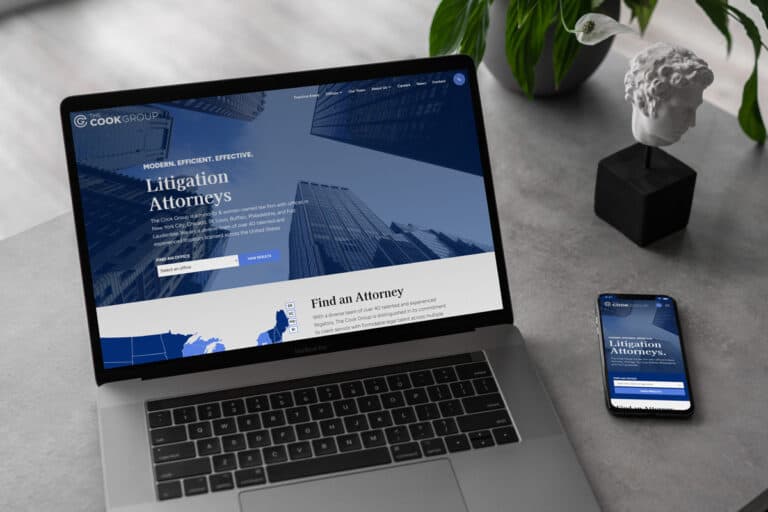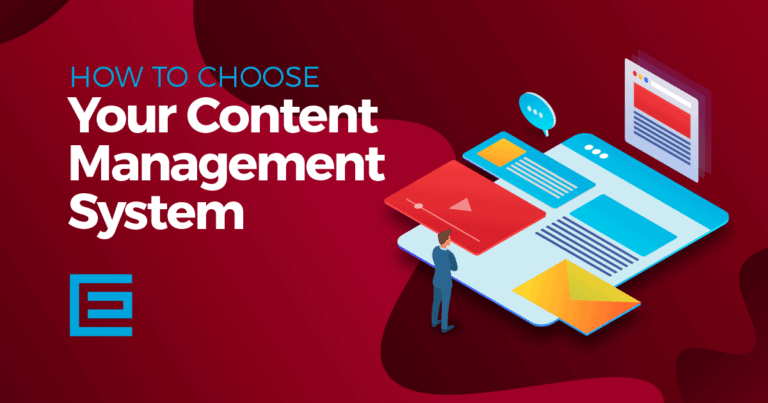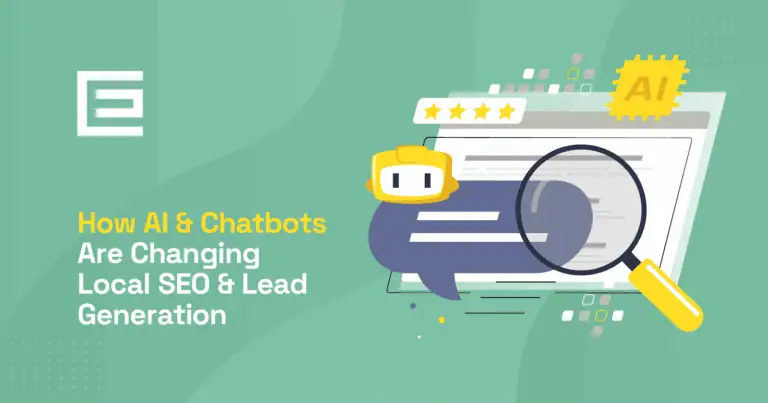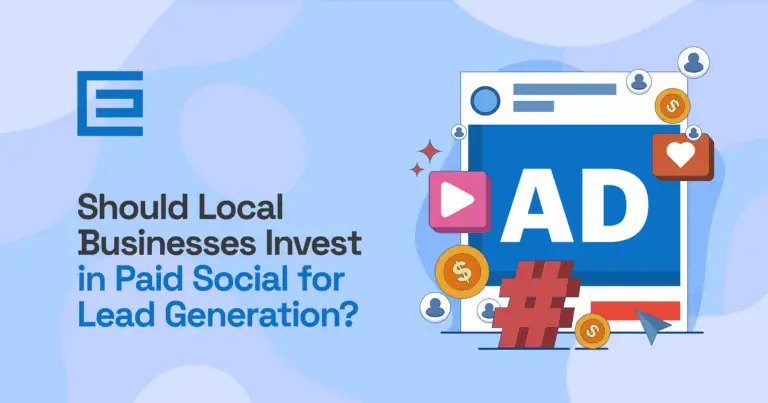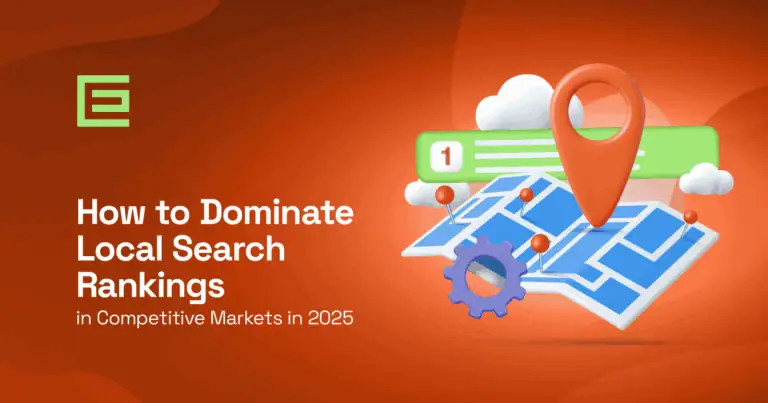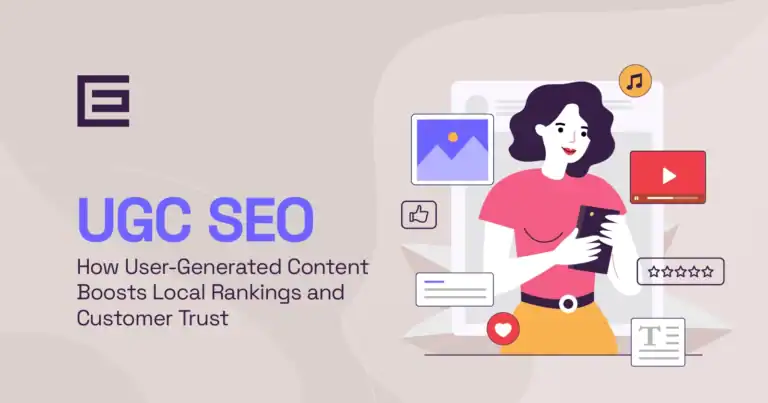Small business owners check their ad spend dashboards every morning like checking a bank balance after a weekend in Vegas. The numbers keep climbing, but the leads? They’re getting more expensive and harder to convert.
Here’s what most business owners don’t realize: Search engine optimization leads convert at 14.6% compared to just 1.7% for traditional outbound methods like cold calling. SEO and lead generation work together to create a compound effect that paid ads simply can’t match. While your ad campaigns stop the moment you pause spending, organic search results keep delivering qualified prospects month after month.
- 1Why Organic SEO Beats Paid Ads for Lead Generation
- 2Understanding Search Intent: The Key to SEO Lead Generation
- 3Strategic Keyword Mapping: Your Sales Funnel Blueprint
- 4Creating Content That Ranks AND Converts
- 5Local SEO: The Small Business Lead Generation Goldmine
- 6Technical SEO: The Foundation That Can’t Be Ignored
- 7Advanced Lead Capture and Conversion Optimization
- 8Building Authority Through Strategic Link Building
- 9Marketing Automation and Lead Nurturing
- 10Measuring Your SEO Lead Generation Success
- 11Your 90-Day SEO Lead Generation Action Plan
- 12Building Your Sustainable Lead Generation System
- 13Frequently Asked Questions
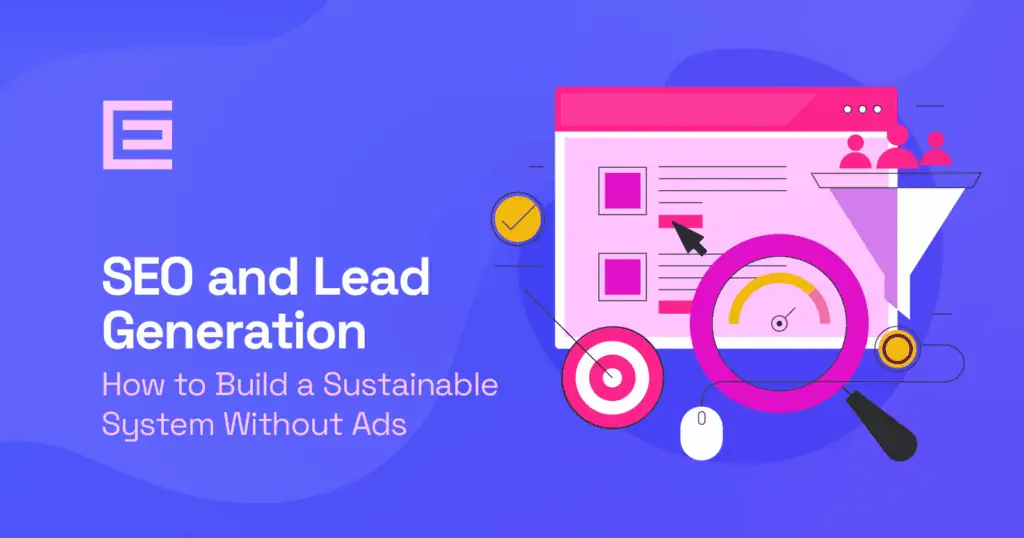
This guide will show you how to build a sustainable lead generation system using strategic SEO tactics. You’ll learn how to:
• Map keywords to different stages of your sales funnel for maximum conversion impact
• Create content that ranks high AND converts visitors into paying customers
• Implement advanced lead capture techniques that turn casual browsers into qualified prospects
Ready to stop paying for every single lead and start building a system that generates them organically?
Why Organic SEO Beats Paid Ads for Lead Generation
When someone clicks on a Google ad, they know they’re being marketed to. There’s an invisible wall of skepticism that comes with paid placement. But when that same person finds your business through an organic search result, you’ve already passed their first test. You’ve proven you’re relevant enough for Google to recommend you.
But there’s more to it than just trust. Organic traffic tends to be more diverse in terms of search intent. Sure, you’ll capture people ready to buy (those high-intent commercial searches), but you’ll also attract folks in the research phase who might become customers six months from now. Understanding the differences between SEO vs PPC helps clarify why organic leads often convert better over time.
Here’s where the compound effect kicks in. Every piece of content you create, every page you optimize, every backlink you earn becomes a permanent asset. Unlike ad campaigns that stop delivering the moment you pause them, your search engine optimization efforts build on each other.
The numbers tell the story pretty clearly. SEO drives over 1,000% more traffic than organic social media, and those visitors are already showing intent by actively searching for solutions.
Understanding Search Intent: The Key to SEO Lead Generation
Most small business owners make a critical mistake when they start their SEO journey. They target keywords based on search volume alone, completely ignoring what their potential customers actually want when they type those words into Google.
Search intent is like reading someone’s mind. When someone searches “best accounting software,” they’re in a completely different mindset than someone searching “how to calculate quarterly taxes.” Both searches might be relevant to an accounting firm, but they require totally different responses. If you’re just getting started with optimization, understanding what is SEO provides the foundation for aligning content with search intent.
Google’s gotten scary good at understanding intent. They can tell the difference between someone looking for information and someone ready to make a purchase. If your content doesn’t match what searchers actually want, you won’t rank well, no matter how perfectly optimized your page might be.
Informational searches are where people start their journey. They’re looking for answers, explanations, or how-to guides. These searchers aren’t ready to buy yet, but they’re perfect candidates for lead magnets and email list building.
Commercial searches show clear buying intent, but the person is still evaluating options. Keywords like “best,” “top,” “review,” or “vs” fall into this category. These are goldmine opportunities for capturing leads who are close to making a decision.
Transactional searches are the holy grail. These people are ready to buy, book, sign up, or take action. They’re using words like “buy,” “order,” “schedule,” or “contact.”
The magic happens when you create content that serves each type of intent while naturally guiding people toward the next step in your sales process.
| Funnel Stage | Search Intent | Example Keywords | Content Type | Primary CTA |
|---|---|---|---|---|
| Top of Funnel | Informational | “how to market small business”, “why website not getting traffic” | How-to guides, educational posts | Lead magnet signup |
| Middle of Funnel | Commercial Investigation | “best marketing agency”, “digital marketing cost”, “SEO vs PPC” | Comparison guides, case studies | Free consultation |
| Bottom of Funnel | Transactional | “marketing agency [city]”, “SEO services near me”, “hire digital marketer” | Service pages, testimonials | Contact/quote form |
Strategic Keyword Mapping: Your Sales Funnel Blueprint
Here’s where most search engine optimization strategies fall apart. Business owners create random content targeting random keywords without any strategic thinking about how those keywords connect to actual business outcomes.
Keyword mapping is like creating a roadmap that guides prospects from their first Google search all the way to becoming paying customers. Every keyword you target should serve a specific purpose in moving people through your sales funnel. If you’re new to this process, our comprehensive guide to local SEO provides detailed steps for mapping local keywords to business outcomes.
Top-of-Funnel Keywords: Building Awareness
At the awareness stage, people are just beginning to recognize they have a problem. For a local marketing agency, top-of-funnel keywords might include “Why isn’t my website getting traffic” or “How to market a small business online.”
The content you create for these keywords should be genuinely helpful and value-driven—not sales-heavy or self-promotional. Focus on producing comprehensive guides, tutorials, and educational resources that answer real questions. Every top-of-funnel piece should include a soft, relevant call-to-action that naturally moves readers toward the consideration stage.
Middle-of-Funnel Keywords: Nurturing Consideration
People at the consideration stage know they have a problem and are actively researching solutions. They’re comparing options and trying to understand what approach might work best.
Middle-of-funnel keywords often include “Best marketing strategies for small business” or “Digital marketing agency vs in-house marketing.” Content for these keywords should be more specific and helpful in evaluation. Case studies work incredibly well here, as do comparison guides and detailed explanations of your methodology.
Bottom-of-Funnel Keywords: Capturing High-Intent Leads
Bottom-of-funnel keywords are where the money lives. These searchers know what they want and are ready to take action. For local businesses, these often include location-specific terms like “Digital marketing agency [your city]” or “Local SEO services near me.”
Content targeting these keywords should be conversion-focused. Think service pages optimized for local search, detailed pricing information, client testimonials, and strong calls-to-action.
Creating Content That Ranks AND Converts
Creating content that both ranks well and generates leads requires a delicate balance. You need to satisfy Google’s algorithmic requirements while also speaking directly to your ideal customers’ needs and concerns. Effective web design for SEO ensures your site structure supports both search visibility and user conversion.
The biggest mistake I see businesses make is optimizing purely for search engines while forgetting about the humans who will actually read their content.
Start with a compelling hook. Your introduction needs to grab attention immediately and make it clear why this content is worth reading.
Provide genuine value first. Before asking for anything, prove your expertise by actually helping your reader solve a problem or answer a question.
Include strategic internal links. Guide readers to related content that moves them deeper into your funnel.
Add relevant, helpful calls-to-action. Don’t just slap a generic “contact us” button at the end. Create CTAs that relate directly to the content someone just consumed.
Problem-solving blog posts work exceptionally well for building trust and demonstrating expertise. Comprehensive resource guides position you as an authority while providing natural opportunities for lead capture. Local service pages are crucial for location-based businesses. Case studies and success stories provide social proof while targeting middle-of-funnel keywords.
Local SEO: The Small Business Lead Generation Goldmine
For most small businesses, local SEO offers the best chance to get qualified leads with less competition. While everyone’s fighting over broad national keywords, you can dominate your local market with focused effort. Professional local SEO services can help you establish dominance in your geographic area through strategic optimization.
| Factor | Local SEO | National SEO |
|---|---|---|
| Competition Level | Low to Medium | High to Very High |
| Time to Results | 3-6 months | 6-18 months |
| Cost per Lead | $50-200 | $100-500+ |
| Conversion Rate | 8-15% | 3-8% |
| Best for | Service businesses, brick & mortar | E-commerce, SaaS, consultants |
| Primary Keywords | “service + city”, “near me” terms | Industry terms, product names |
Local searches have incredibly high commercial intent. When someone searches “plumber near me” at 10 PM on a Sunday, they’re not browsing casually. They need help immediately and they’re ready to hire someone. Understanding why businesses need local SEO becomes clear when you realize these searches often convert at much higher rates than general industry terms.
Google Business Profile: Your 24/7 Lead Generation Machine
Your Google Business Profile is often the first thing potential customers see when they search for local services. Complete every section of your profile. Google rewards businesses that provide comprehensive information. Include detailed descriptions, accurate hours, multiple contact methods, and high-quality photos.
Actively manage and respond to reviews. Positive reviews improve your local rankings while building trust with prospects. Respond to all reviews professionally.
Post regular updates. Google Business Profile allows you to share updates, photos, events, and offers. Regular posting signals to Google that your business is active.
Location-Based Content Strategy
Create dedicated service area pages. If you serve multiple cities or neighborhoods, create individual pages for each area. Include local landmarks and discuss area-specific challenges.
Write about local events and community involvement. Content about local happenings helps establish your connection to the community while providing opportunities to naturally include location-based keywords.
Technical SEO: The Foundation That Can’t Be Ignored
You can have the most compelling content in the world, but if your website has technical issues, you’re sabotaging your own lead generation efforts.
Page speed directly impacts both rankings and conversions. Google uses Core Web Vitals as ranking factors, and slow-loading pages frustrate visitors enough to make them leave before they even see your offer.
Most small business websites are slower than they need to be. Common culprits include oversized images, too many plugins, poor hosting, and bloated code. Tools like Google PageSpeed Insights can identify specific issues and provide recommendations for improvement. Avoiding these common SEO mistakes can significantly improve both your rankings and conversion rates.
Mobile optimization is no longer optional. More than half of all searches happen on mobile devices, and Google uses mobile-first indexing. If your site doesn’t work well on smartphones, you’re missing out on a massive portion of potential leads.
Make it ridiculously easy for people to contact you. Include clear contact information on every page, use click-to-call buttons for mobile users, and consider adding live chat for immediate engagement.
Advanced Lead Capture and Conversion Optimization
Getting traffic is only half the battle. The real magic happens when you convert that traffic into qualified leads who are genuinely interested in working with your business.
Strategic Lead Magnet Development
Lead magnets work because they create a fair value exchange. Prospects get something immediately useful, and you get their contact information and permission to continue the conversation.
The most effective lead magnets solve a specific, urgent problem for your ideal customers. Generic offerings like “newsletter signup” don’t create enough motivation for most people to hand over their email address.
Industry-specific checklists and templates tend to perform exceptionally well. They’re quick to consume, immediately actionable, and demonstrate your expertise.
Interactive tools and calculators can be incredibly effective for businesses that can quantify their value proposition. A landscaping company might create a “Project Cost Estimator,” while a financial advisor could offer a “Retirement Planning Calculator.” For online retailers, implementing ecommerce SEO strategies can help product pages rank higher and convert better.
Free consultations or audits work well for service-based businesses, especially when positioned as diagnostic tools rather than sales pitches. Frame these as opportunities to identify problems and provide valuable insights, whether prospects work with you or not.
| Business Type | Most Effective Lead Magnet | Average Conversion Rate | Best Placement |
|---|---|---|---|
| Professional Services | Free consultation/audit | 12-18% | Service pages, blog posts |
| E-commerce | Discount codes, buying guides | 8-15% | Product pages, exit-intent popups |
| Local Services | Cost calculators, checklists | 15-25% | Landing pages, Google Ads |
| B2B SaaS | Free trials, demo videos | 10-20% | Feature pages, comparison content |
| Healthcare | Symptom checkers, health guides | 18-30% | Informational content, FAQ pages |
Conversion Rate Optimization for Organic Traffic
Different traffic sources require different conversion approaches. Someone who finds you through a blog post is in a different mindset than someone who searched for your specific services. Customize your approach accordingly.
Test your calls-to-action relentlessly. Small changes in CTA copy, placement, or design can dramatically impact conversion rates.
Use social proof strategically. Testimonials, case studies, client logos, and review snippets all help overcome skepticism and build trust.
Building Authority Through Strategic Link Building
Backlinks remain one of the strongest ranking factors in Google’s algorithm, but link building has evolved far beyond simple directory submissions.
Focus on relationships, not just links. The most valuable local links come from genuine business relationships and community involvement. Join local business organizations, sponsor community events, and participate in industry associations.
Create linkable local content. Local market research, community event coverage, and area business spotlights naturally attract links from other local websites and organizations.
Guest posting still works when done strategically. Focus on high-quality publications that your target customers actually read. Provide genuine value in your contributions rather than writing obviously promotional content.
Create resources that other websites want to reference. Original research, comprehensive guides, and useful tools naturally attract links from other content creators and industry publications. Understanding what are backlinks and their impact on search rankings helps you develop effective link-building strategies.
Marketing Automation and Lead Nurturing
Organic search traffic rarely turns into customers right away. Most prospects need multiple touchpoints before they’re ready to make a purchasing decision.
Not all leads are created equal. Someone who downloads a top-of-funnel lead magnet needs different follow-up than someone who requests a quote for your services. Segment your leads based on how they found you and what actions they’ve taken.
Track the complete customer journey. Use tools like Google Analytics and your CRM to understand how leads move through your sales funnel. This data helps you optimize both your SEO strategy and your sales process.
Create targeted follow-up sequences. Develop email sequences that correspond to different lead sources and intent levels. Someone interested in “small business marketing tips” should receive different content than someone searching for “marketing agency pricing.” Modern AI local SEO and lead generation tools can help automate this segmentation process for better results.
Use email to drive engagement with your content. Regular email newsletters featuring your latest blog posts and resources help maintain relationships with prospects while driving additional traffic to your website.
Measuring Your SEO Lead Generation Success
You can’t improve what you don’t measure. Tracking the right metrics helps you understand what’s working, what isn’t, and where to focus your optimization efforts.
Focus on qualified leads, not just total leads. A hundred unqualified leads are less valuable than ten prospects who are genuinely interested in your services and have the budget to hire you.
Track conversion rates by traffic source. Different keywords and content pieces will convert at different rates. Understanding these variations helps you double down on what works and improve what doesn’t.
Calculate the lifetime value of SEO leads. Don’t just measure immediate conversions. Track how SEO leads perform over time compared to leads from other sources. Often, organic leads have higher lifetime value even if they take longer to close initially. Understanding the ROI of SEO helps justify continued investment in organic strategies over quick-fix advertising approaches.
Google Analytics 4 provides comprehensive insights into user behavior, conversion paths, and traffic sources. Set up goal tracking for key actions like contact form submissions, phone calls, and email signups.
Your 90-Day SEO Lead Generation Action Plan
Building an effective SEO lead generation system takes time, but you can start seeing results much sooner with focused effort on high-impact activities.
| Timeframe | Primary Focus | Expected Results | Key Metrics to Track |
|---|---|---|---|
| Month 1-3 | Foundation & Technical SEO | 10-25% traffic increase | Page speed, crawl errors, mobile usability |
| Month 4-6 | Content & Local SEO | First qualified leads | Keyword rankings, local visibility, form submissions |
| Month 7-12 | Authority Building | Consistent lead flow | Backlink growth, conversion rates, lead quality |
| 12+ Months | Optimization & Scale | Predictable lead generation | Cost per lead, lifetime value, market share |
Month 1: Foundation and Research
Complete your keyword research and competitive analysis. Identify the keywords your target customers use at each stage of the buying process. Analyze what content currently ranks for those terms and identify opportunities to create something better.
Audit your current website and technical SEO. Fix any glaring technical issues that could prevent search engines from properly crawling and indexing your site. Optimize page speeds and ensure mobile responsiveness.
Set up proper analytics and tracking. Configure Google Analytics, Search Console, and any other tools you’ll use to measure success.
Month 2: Content Creation and On-Page Optimization
Create your first round of optimized content. Focus on bottom-of-funnel keywords that are most likely to drive immediate leads. Optimize existing service pages and create new content targeting high-intent local searches.
Develop your lead magnets and conversion elements. Create valuable resources that provide genuine value to your target customers. Design and implement lead capture forms and calls-to-action.
Optimize your Google Business Profile and local SEO elements. Ensure your local listings are complete and accurate across all platforms.
Month 3: Promotion and Optimization
Launch your content promotion and link building efforts. Share your content across relevant channels, reach out to local businesses for partnership opportunities, and begin building relationships with industry influencers.
Analyze your initial results and optimize. Review your analytics data to understand what’s working and what isn’t. Make adjustments to underperforming content and double down on successful strategies.
Building Your Sustainable Lead Generation System
The businesses that succeed with SEO lead generation think about it as building an asset, not running a campaign. Every piece of content you create, every optimization you make, and every relationship you build contributes to a system that gets stronger over time.
Unlike paid advertising, where results disappear the moment you stop spending, SEO creates compounding returns. The key is consistency and patience. SEO lead generation isn’t a get-rich-quick scheme. It’s a systematic approach to building long-term business growth through organic search visibility.
Start with the fundamentals: keyword research, technical optimization, and high-quality content creation. Focus on serving your target customers’ needs while making it easy for search engines to find and understand your content.
Most importantly, remember that SEO is ultimately about connecting with people who need what you offer. The tactics and techniques matter, but they’re just tools for creating genuine value and building trust with your potential customers. If you’re feeling overwhelmed by the process, learning how to choose your SEO agency can help you find the right partner to implement these strategies effectively.
Ready to stop paying for every lead and start building a system that works around the clock? Pick one strategy from this guide and implement it completely before moving on to the next. Consistent action on the fundamentals will always beat sporadic efforts on advanced tactics.
Frequently Asked Questions
Most businesses start seeing some organic traffic improvements within 3-6 months, but meaningful lead generation typically takes 6-12 months of consistent effort. The timeline depends on how competitive your industry is. Local businesses often see results faster than those targeting national markets.
For local businesses, ranking well locally means doing five things right: keep your Google Business Profile updated, make sure your listings match everywhere, get and respond to real reviews, add local content, and make your site work fast on mobile. Small businesses actually have several advantages in SEO, especially for local search terms and niche markets. You can create more personalized content, respond quickly to market changes, and build genuine relationships in your community. Focus on local keywords and long-tail terms where you can establish authority more easily than competing on broad, national terms.
SEO leads typically have higher trust levels and conversion rates because they find you through organic search rather than paid ads. They’re also generally less expensive to acquire over time, though they require more upfront investment in content and optimization. SEO leads often have higher lifetime value since they tend to be more engaged with your brand from the initial interaction.
Most small businesses invest between $2,000-$5,000 monthly for professional SEO services, though you can start with smaller budgets by focusing on DIY efforts and specific tactics. The key is consistency rather than large one-time investments. Even modest monthly investments in content creation and optimization compound over time.
For local businesses, the most critical factors are Google Business Profile optimization, local citation consistency, online reviews, location-specific content, and mobile optimization. Focus on appearing in local map results and optimizing for “near me” searches, as these often have the highest conversion rates for service-based
Start Generating More Leads with AI Today
TheeDigital specializes in implementing AI-powered lead generation strategies that automate qualification, boost conversion rates, and scale your sales pipeline. Contact us to learn how AI can transform your lead generation and give your business a competitive edge.
Tags: Lead Generation • Paid Search Marketing • Search Engine Optimization
